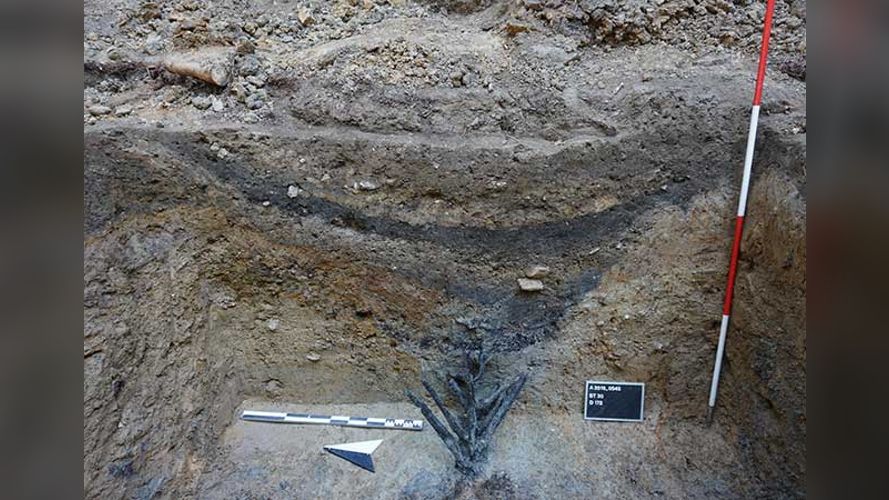Ancient Roman 'spike defenses' made famous by Julius Caesar found in Germany
By Kristina Killgrove published 28 February 2023
Archaeologists have found ancient Roman "barbed wire," famously used and written about by Julius Caesar, for the first time near a German silver mine.

Roman-era wooden spikes were found preserved in the damp soil in the Bad Ems area of Germany. (Image credit: Frederic Auth)
In 52 B.C., Julius Caesar used an ingenious system of ditches and stakes to defend his soldiers from an encroaching Gallic army in modern-day central France. More than two millennia later, archaeologists have discovered the first preserved example of similar defensive stakes, which likely protected an ancient silver mine.
A student team made the unprecedented discovery in the area of Bad Ems, halfway between the present-day cities of Bonn and Mainz in Germany, on the former northern border of the Roman Empire.
Archaeologists have been working in the area of Bad Ems since the late 19th century. Early excavations yielded processed silver ore along with wall foundations and metal slag, so researchers believed that they comprised smelting works dating to the early second century A.D. But in 2016, a hunter noticed odd crop formations and told archaeologists at Goethe University, who later found that the area hosted a 20-acre (8 hectares) double-ditched Roman camp with the remains of around 40 wooden watchtowers.
This year, the student team led by Frederic Auth(opens in new tab) unearthed the preserved wooden spikes in the damp soil of Blöskopf Hill, which held a second recently discovered Roman camp 1.3 miles (2 kilometers) away from the first fort. The team also found a coin from A.D. 43, proving that the two forts significantly pre-dated a larger system of fortifications known as the "limes" that was constructed in A.D. 110. The limes (meaning "boundary line"

was the fortified border wall that ran along the northern Roman Empire.
More:
https://www.livescience.com/ancient-roman-spike-defenses-made-famous-by-julius-caesar-found-in-germany
